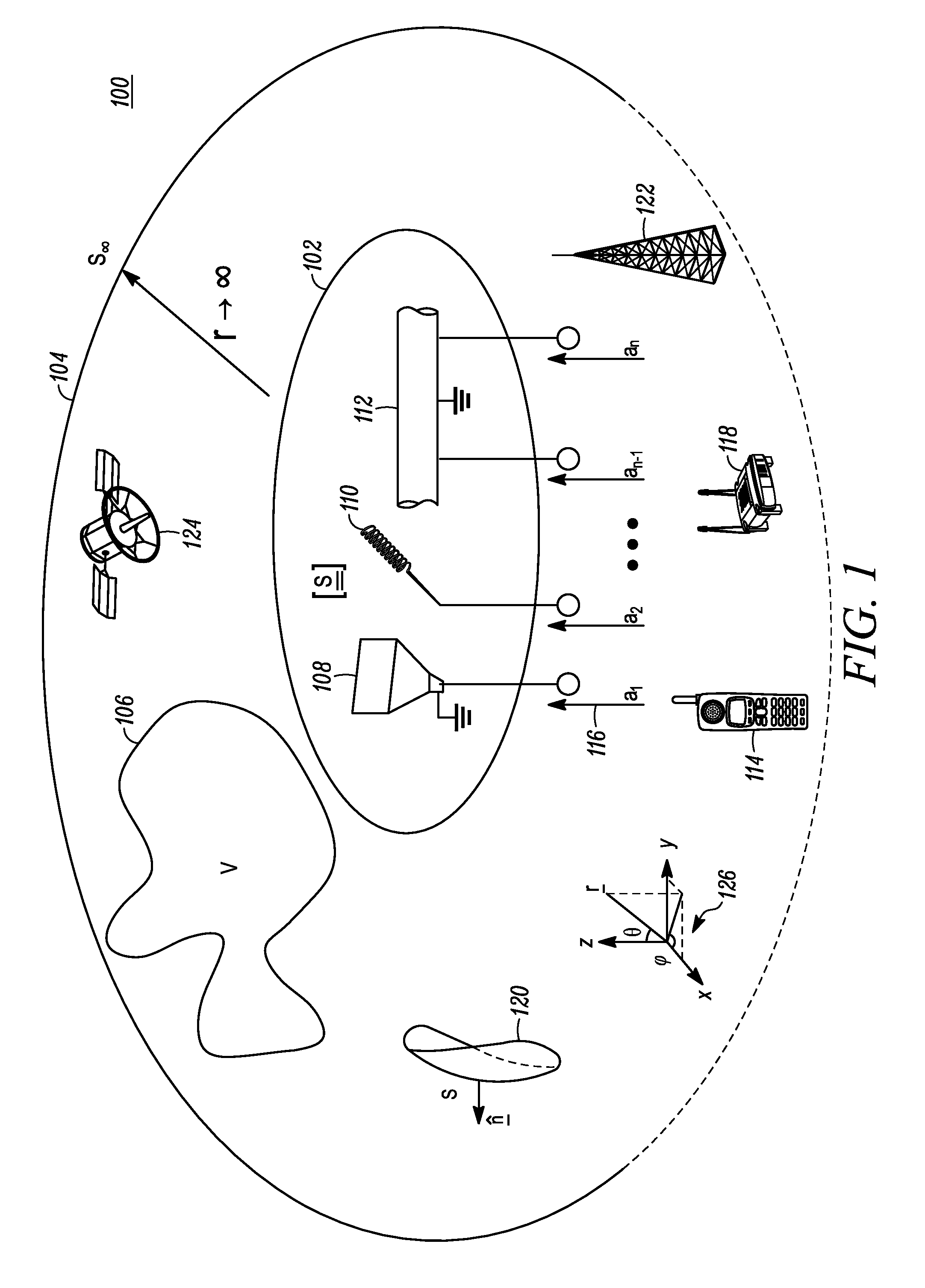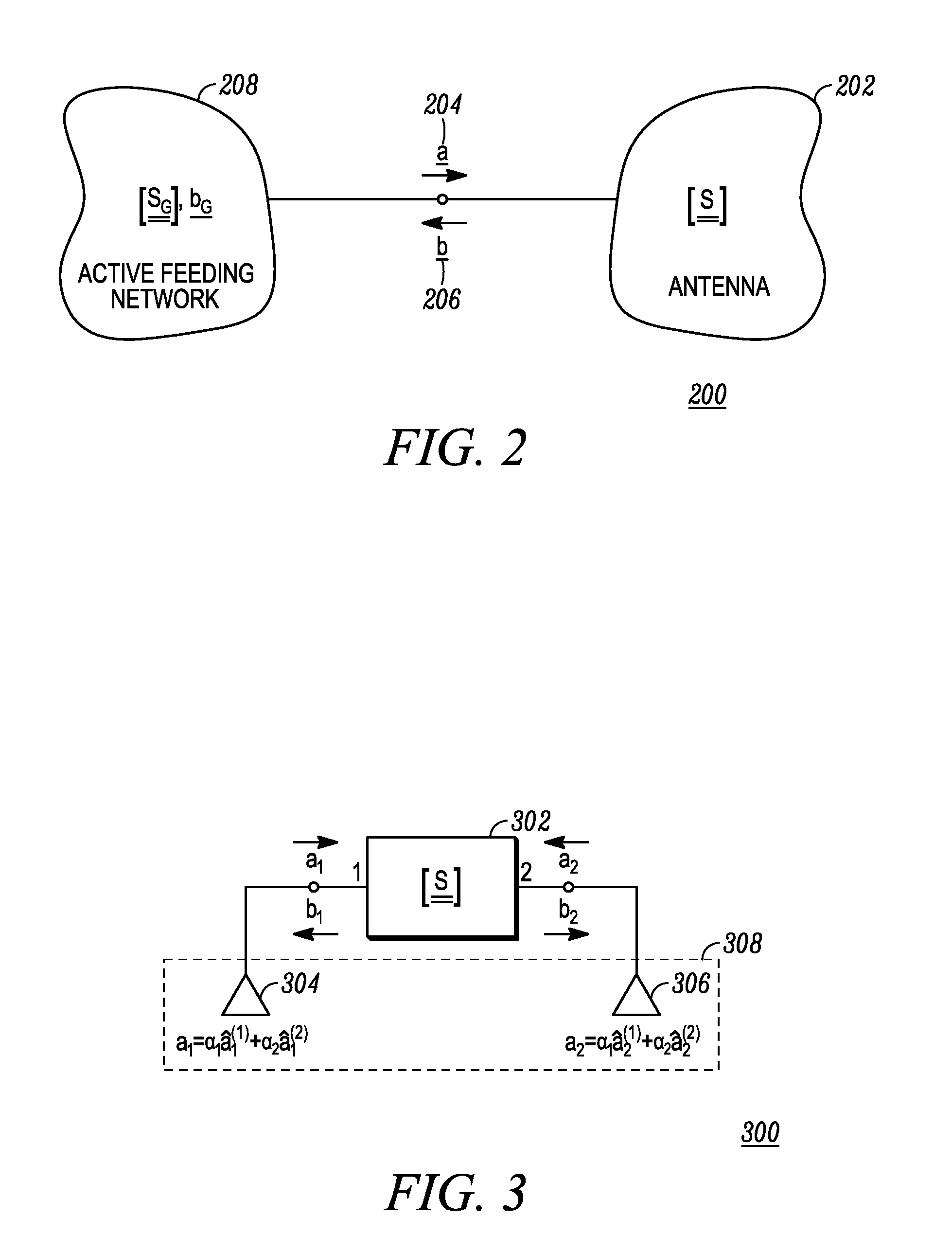Multiple-input multiple-output (MIMO) antenna system
a multi-input, multi-output technology, applied in the direction of independent non-interaction antenna combinations, substation equipment, transmission, etc., can solve the problems of affecting the symmetries of near-field coupling with the user's body, placing significant constraints on the handset id, architecture and mechanics, and difficult to achieve proper antenna isolation
- Summary
- Abstract
- Description
- Claims
- Application Information
AI Technical Summary
Benefits of technology
Problems solved by technology
Method used
Image
Examples
Embodiment Construction
[0018]Briefly, in accordance with various embodiments to be described herein, there is provided a multiple-input multiple-output (MIMO) antenna system realized by defining feeding profiles based on the eigenvectors of a suitable mathematical representation of the antenna system. The MIMO antenna system formed and operating in accordance with the various embodiments enhances system performance in terms of range and capacity (i.e. efficiency and data throughput), which in turn enhances system reliability and user experience.
[0019]In accordance with the various embodiments, a suitable matrix representation of the MIMO antenna system is employed to determine eigenvectors associated with the multiple antenna feeds. These “eigen-feed” configurations have the property of exciting uncorrelated “antenna modes” that have distinct efficiencies. The modes are uncorrelated regardless of the actual antenna elements geometries and their mutual coupling. By suitable transformation of the “eigen-fee...
PUM
 Login to View More
Login to View More Abstract
Description
Claims
Application Information
 Login to View More
Login to View More - R&D
- Intellectual Property
- Life Sciences
- Materials
- Tech Scout
- Unparalleled Data Quality
- Higher Quality Content
- 60% Fewer Hallucinations
Browse by: Latest US Patents, China's latest patents, Technical Efficacy Thesaurus, Application Domain, Technology Topic, Popular Technical Reports.
© 2025 PatSnap. All rights reserved.Legal|Privacy policy|Modern Slavery Act Transparency Statement|Sitemap|About US| Contact US: help@patsnap.com



